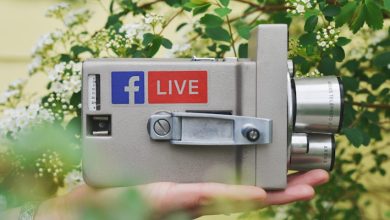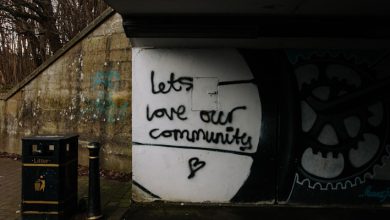The Evolution of Digital Art Through NFTs

- Exploring the intersection of digital art and blockchain technology
- Understanding the rise of NFTs in the art world
- The impact of NFTs on the traditional art market
- Challenges and opportunities for digital artists in the NFT space
- NFTs as a new form of art ownership and creation
- The future of digital art: trends and innovations in the NFT ecosystem
Exploring the intersection of digital art and blockchain technology
The intersection of digital art and blockchain technology has opened up a world of possibilities for artists and collectors alike. By leveraging blockchain technology, artists can now create and sell unique digital artworks as non-fungible tokens (NFTs). These NFTs are one-of-a-kind digital assets that are authenticated and verified on the blockchain, ensuring their scarcity and authenticity.
This innovative use of blockchain technology has revolutionized the art world, providing artists with new ways to monetize their work and reach a global audience. Through NFTs, artists can tokenize their digital creations, allowing collectors to purchase and own them securely on the blockchain. This decentralized approach to art ownership eliminates the need for intermediaries, empowering artists to directly connect with their audience and retain more control over their work.
Moreover, the transparency and immutability of the blockchain ensure that each NFT is unique and cannot be replicated or forged. This gives collectors the confidence that they are purchasing an original piece of digital art, adding value to the artwork and creating a new market for digital collectibles. As a result, the intersection of digital art and blockchain technology is reshaping the art industry, democratizing access to art and creating new opportunities for artists to thrive in the digital age.
Understanding the rise of NFTs in the art world
The rise of NFTs in the art world has been a game-changer for digital artists. NFTs, or non-fungible tokens, have revolutionized the way digital art is bought and sold, providing artists with new opportunities to showcase and monetize their work. One of the key reasons for the popularity of NFTs in the art world is their ability to provide proof of ownership and authenticity. This has helped to address the issue of digital art being easily replicable and shared without the artist’s consent.
With the advent of NFTs, digital artists now have a way to create scarcity and exclusivity in their work, making it more valuable to collectors. The blockchain technology behind NFTs ensures that each digital artwork is unique and cannot be duplicated or forged. This has led to a surge in demand for digital art in the form of NFTs, with collectors willing to pay top dollar for these one-of-a-kind pieces.
Another factor driving the rise of NFTs in the art world is the sense of community and belonging that they provide. By owning an NFT, collectors become part of an exclusive group of individuals who appreciate and support digital art. This sense of belonging has created a strong market for NFTs, with artists finding new ways to connect with their audience and build a loyal following.
Overall, the rise of NFTs in the art world has opened up a world of possibilities for digital artists. It has given them a platform to showcase their work, connect with collectors, and monetize their creations in ways that were previously not possible. As NFTs continue to gain popularity, we can expect to see even more innovation and creativity in the digital art space.
The impact of NFTs on the traditional art market
As NFTs continue to gain popularity, their impact on the traditional art market is becoming increasingly noticeable. NFTs have revolutionized the way digital art is bought and sold, providing artists with a new way to monetize their work and reach a wider audience. This has led to a shift in the art world, with traditional art dealers and galleries starting to take notice of the potential of NFTs.
One of the key ways in which NFTs are impacting the traditional art market is by providing a more secure and transparent way to authenticate and track the ownership of digital art. With blockchain technology, each NFT is unique and cannot be replicated or forged, giving buyers confidence in the authenticity of the artwork they are purchasing. This has the potential to eliminate many of the issues that have plagued the traditional art market, such as forgeries and disputes over ownership.
Furthermore, NFTs are opening up new avenues for artists to connect directly with collectors and fans, bypassing the need for intermediaries such as galleries and auction houses. This direct-to-consumer model allows artists to retain more control over their work and keep a larger share of the profits. It also allows them to experiment with new formats and styles without having to cater to the tastes of traditional art market gatekeepers.
Challenges and opportunities for digital artists in the NFT space
Digital artists in the NFT space face a unique set of challenges and opportunities. One of the main challenges is the competitive nature of the market. With more and more artists entering the space, it can be difficult to stand out and get noticed. However, this also presents an opportunity for artists to push themselves creatively and explore new techniques to differentiate themselves from the competition.
Another challenge for digital artists in the NFT space is the issue of copyright infringement. As digital art can easily be reproduced and distributed online, artists must take precautions to protect their work from being stolen or copied without their permission. On the other hand, the use of blockchain technology in NFTs offers a solution to this problem by providing a secure and transparent way to verify ownership of digital assets.
One of the biggest opportunities for digital artists in the NFT space is the potential for financial gain. NFTs have opened up new revenue streams for artists, allowing them to sell their work directly to collectors without the need for intermediaries. This has the potential to revolutionize the art market and provide artists with a more sustainable income source.
Additionally, NFTs have the potential to democratize the art world by giving artists from all backgrounds and levels of experience the opportunity to showcase and sell their work on a global scale. This can help to break down traditional barriers to entry in the art world and create a more inclusive and diverse creative community.
Overall, while there are challenges to navigate, the opportunities for digital artists in the NFT space are vast. By embracing new technologies and approaches, artists can push the boundaries of what is possible in the digital art world and carve out a unique and successful career for themselves.
NFTs as a new form of art ownership and creation
NFTs have revolutionized the art world by providing a new way for artists to create and sell their digital artworks. This innovative technology allows artists to tokenize their creations, making them unique and scarce in the digital realm. By using blockchain technology, NFTs ensure the authenticity and ownership of digital art, giving artists more control over their work.
With NFTs, art ownership is transferred through a decentralized ledger, providing a transparent and secure way for collectors to buy and sell digital art. This form of ownership has opened up new opportunities for artists to monetize their work and reach a larger audience. Additionally, NFTs allow for royalties to be built into the smart contracts, ensuring that artists can continue to benefit from the resale of their pieces.
Moreover, NFTs have expanded the possibilities for art creation by enabling artists to explore new mediums and concepts. The digital nature of NFTs allows for dynamic and interactive artworks that can change over time or be influenced by external factors. This has sparked a wave of creativity in the art world, with artists pushing the boundaries of what is possible in the digital space.
Overall, NFTs have ushered in a new era of art ownership and creation, empowering artists to take control of their work and connect with collectors in a meaningful way. As the art world continues to evolve, NFTs are sure to play a significant role in shaping the future of digital art.
The future of digital art: trends and innovations in the NFT ecosystem
The future of digital art is increasingly intertwined with Non-Fungible Tokens (NFTs), revolutionizing the way artists create, sell, and collect digital artwork. NFTs are unique digital assets that are stored on a blockchain, providing proof of ownership and authenticity. This has opened up new possibilities for artists to monetize their work and reach a global audience like never before.
One of the key trends in the NFT ecosystem is the use of smart contracts, which automate the process of buying, selling, and licensing digital art. Smart contracts can be programmed to ensure that artists receive royalties every time their work is sold or traded, providing them with a continuous stream of income. This has the potential to completely transform the traditional art market, making it more accessible and equitable for artists of all backgrounds.
Another innovation in the NFT ecosystem is the rise of decentralized marketplaces, where artists can mint and sell their NFTs without the need for intermediaries. These platforms allow artists to retain full control over their work and connect directly with collectors, eliminating the need for galleries or auction houses. This peer-to-peer model is empowering artists to take ownership of their creative output and establish direct relationships with their audience.
As the NFT ecosystem continues to evolve, we can expect to see a greater emphasis on sustainability and inclusivity. Blockchain technology has the potential to reduce the environmental impact of digital art by verifying transactions more efficiently and transparently. Additionally, NFTs have the power to democratize the art world by giving artists from underrepresented communities a platform to showcase their work and gain recognition.
Overall, the future of digital art in the NFT ecosystem is bright, with endless opportunities for innovation and creativity. By embracing new technologies and decentralized platforms, artists can take their careers to new heights and redefine the way we think about art in the digital age.



